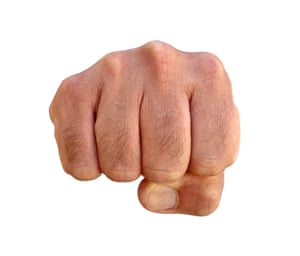 1. The cracking sound made by knuckles, necks, backs, and other joints when they’re cracked is the sound of bubbles popping in the joints’ fluid. Is it harmful? Not terribly. But cracking a joint too often can hurt the cords, called ligaments, that surround the joint.
1. The cracking sound made by knuckles, necks, backs, and other joints when they’re cracked is the sound of bubbles popping in the joints’ fluid. Is it harmful? Not terribly. But cracking a joint too often can hurt the cords, called ligaments, that surround the joint. 2. Sweat doesn’t smell bad. A stinky “body odour” is caused when the skin bacteria feed on sweat. Their waste products are what smell bad!Photograph: National Geographic/Ultimate Bodypedia
2. Sweat doesn’t smell bad. A stinky “body odour” is caused when the skin bacteria feed on sweat. Their waste products are what smell bad!Photograph: National Geographic/Ultimate Bodypedia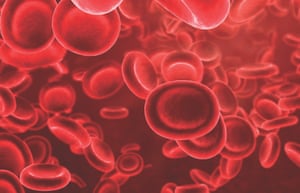 3. Just one drop of blood contains about 10,000 while blood cells and 250,000 plateletsPhotograph: National Geographic/Ultimate Bodypedia
3. Just one drop of blood contains about 10,000 while blood cells and 250,000 plateletsPhotograph: National Geographic/Ultimate Bodypedia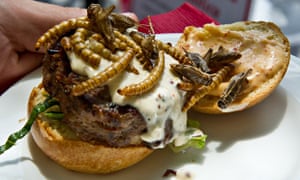 4. You’re used to seeing bugs in your garden, but how about on your plate? Nutritious, edible insects including grasshoppers, beetles, wasps, worms, cicadas, and caterpillars are paced with vitamins and minerals and are eaten by people around the globe! Visiting China or Thailand? Stop for a deep-fried cicada on a stick! Next stop the Netherlands? Grab a grasshopper spring roll or burger (with meal worms) as seen in this photograph!Photograph: Karen Bleier/AFP/Getty Images
4. You’re used to seeing bugs in your garden, but how about on your plate? Nutritious, edible insects including grasshoppers, beetles, wasps, worms, cicadas, and caterpillars are paced with vitamins and minerals and are eaten by people around the globe! Visiting China or Thailand? Stop for a deep-fried cicada on a stick! Next stop the Netherlands? Grab a grasshopper spring roll or burger (with meal worms) as seen in this photograph!Photograph: Karen Bleier/AFP/Getty Images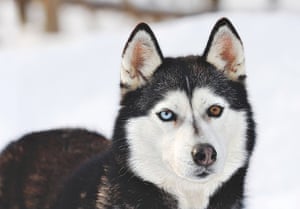
5. Eye colour Heterochromia is a condition in which people have different colour eyes. It’s rare in humans (actor Kiefer Sutherland has heterochromia), but common in dogs – and seen here in a beautiful husky dogPhotograph: National Geographic/Ultimate Bodypedia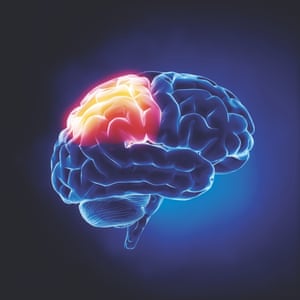 6. The Brain is a very wrinkly organ! If you spread it out, your brain would be about the size of a pillowcase. By the time you are six years old, your brain is already 90 percent of the size it will be when you are an adultPhotograph: National Geographic/Ultimate Bodypedia
6. The Brain is a very wrinkly organ! If you spread it out, your brain would be about the size of a pillowcase. By the time you are six years old, your brain is already 90 percent of the size it will be when you are an adultPhotograph: National Geographic/Ultimate Bodypedia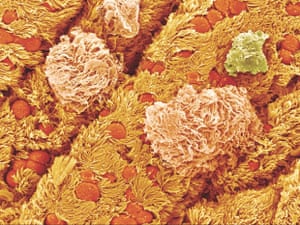 7. Here’s a close up picture of a liver. The liver has an amazing ability to grow back if part of it is removed due to injury, disease, or surgery. It will even grow to be just the right size for the body it’s in.Photograph: National Geographic/Ultimate Bodypedia
7. Here’s a close up picture of a liver. The liver has an amazing ability to grow back if part of it is removed due to injury, disease, or surgery. It will even grow to be just the right size for the body it’s in.Photograph: National Geographic/Ultimate Bodypedia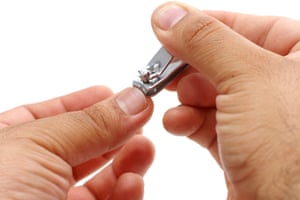 8. Like dead skin cells, your hair and nails are made of keratin. Keratin forms tough body parts in other animals, too. It’s found in wool, fur, feathers, claws, beaks, hooves, horns, porcupine quills, and turtle shellsPhotograph: National Geographic/Ultimate Bodypedia
8. Like dead skin cells, your hair and nails are made of keratin. Keratin forms tough body parts in other animals, too. It’s found in wool, fur, feathers, claws, beaks, hooves, horns, porcupine quills, and turtle shellsPhotograph: National Geographic/Ultimate Bodypedia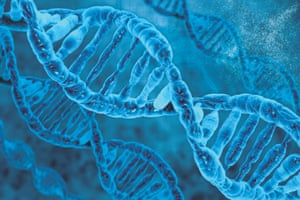 9. About 10,000 human cells can fit on the head of a pinPhotograph: National Geographic/Ultimate Bodypedia
9. About 10,000 human cells can fit on the head of a pinPhotograph: National Geographic/Ultimate Bodypedia
New tissue needs blood supply, so your vascular system expands to accommodate it. This also means your heart must work harder to pump blood through the new network, which may reduce oxygenation and nutrient replenishment in other tissues. Lose a pound? Your body will break down and reabsorb the unneeded blood vessels from the previous tissue.
10. Muscle tissue is three times more efficient at burning calories than fat.
This is why possessing more muscle should be a training goal for most people. More muscle = more calories burned = less fat = being more fit looking. Simple goals and simple math.
11. You are taller in the morning than in the evening.
When you crawl out of the sack in the morning you are at your tallest. On average, you are approximately one half inch taller when you wake in the morning, thanks to excess fluid between within your spinal discs. While you are sleeping, these fluids replenish. During the day your body has to deal with the stress of standing, so the discs become compressed and the fluid seeps out. This results in you losing a small amount of extra height.
As a part of the digestive process, your stomach secretes hydrochloric acid (HA). HA is a powerful corrosive compound also used to treat various metals. The HA your stomach secretes is also powerful, but mucous lining the stomach wall keeps it within the digestive system. As a result it breaks down the food you consume, but not your own stomach.
13. Your body produces enough heat in only thirty minutes to boil a half-gallon of water.
Your body is the epitome of a study on the laws of thermodynamics. You produce heat from all that is going on - exercise, metabolizing food, maintaining homeostasis – and as you sweat, exhale, excrete, and urinate (lovely thoughts, all of them).
14. Human bone is as strong as granite, relative to supporting resistance.
Would you believe a matchbox-size chunk of bone can support 18,000 pounds? Compared to concrete, human bone is four times greater in support strength.
15. Your skin is an organ.
Just like the liver, heart, and kidneys, your outer covering is an organ. An average man has enough skin on his body to cover approximately twenty square feet. For an average woman it is approximately seventeen square feet. Approximately 12% of your weight is from your skin. And, your skin replaces 45,000+ cells in only a few seconds. It's constantly growing new skin and shedding old skin.
From that age forward it begins to lose more than 1,000 brain cells every day. Only two percent of your body weight is occupied by your gray matter, but is uses up to 20% of your overall energy output (it needs carbohydrates). Your brain works continuously and never rests, even when you're asleep. Aside from producing REM dreams, your brain works overtime to replenish its ability to function normally during your daytime waking hours.
17. There are more than 600 individual skeletal muscles and 206 bones in your body.
If all 600+ muscles contracted and pulled in the same direction, you could lift over twenty tons of resistance. Additionally, the adult skeleton is composed of 206 bones, but at birth an infant skeleton contains approximately 350 bones. Over time, some of the 350 bones fuse together and eventually grow to the 206 adult figure.
18. You need to consume a quart of water each day for four months to equate to the amount of blood your heart pumps in one hour.




0 comments:
Post a Comment
World of Biology.